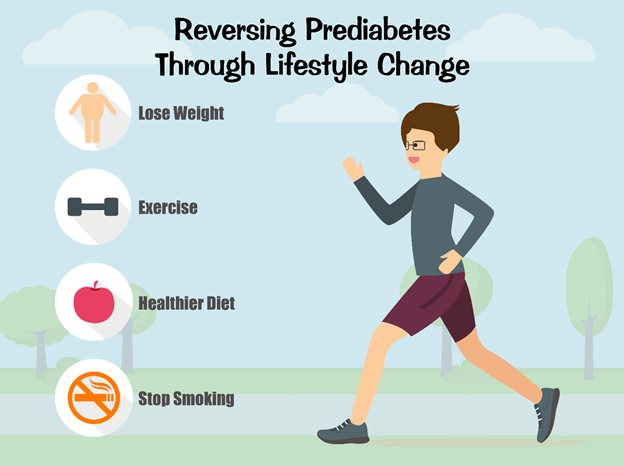Prediabetes is a condition that is relatively unknown to the general Filipino public. While there have been conscious efforts to educate the public on diabetes (whether type 1 or type 2), Filipinos remain in the dark—and consequently, undiagnosed—about the condition that precedes it.
What is Prediabetes?

In a nutshell, prediabetes is when a person’s blood glucose level turns out to be higher than normal but not high enough to be considered diabetes.
It is a term that came out only at the turn of the 21st century. In 2002, the American Diabetes Association coined the medical term “prediabetes” to re-label previous conditions called Impaired Glucose Tolerance (IGT) and Impaired Fasting Glucose (IFG). IGT means high blood sugar after eating, while IFG refers to high blood sugar after morning meals. Prediabetes can be the result of either IGT or IFG. It could also be due to your body developing insulin resistance (ineffective use of insulin).
When left untreated, people with prediabetes are at risk of it developing to Type 2 Diabetes Mellitus, heart disease, and/or stroke.
Diagnosing Prediabetes
| Results | |||
| Normal | Prediabetes | Diabetes | |
| A1C test | less than 5.7% | 5.7% to 6.4% | 6.5% or higher |
| FBS test | less than 100 mg/dl | 100 mg/dl to 125 mg/dl | 126 mg/dl or higher |
| OGTT test | less than 140 mg/dl | 140 mg/dl to 199 mg/dl | 200 mg/dl or higher |
| RPG test | less than 140 mg/dl | 140 mg/dl to 199 mg/dl | 200 mg/dl or higher |
Table 1. Laboratory examinations and corresponding results to determine prediabetes
There are four laboratory examinations that can accurately determine one’s blood sugar level. Your doctor may order one or two of these tests:
- Glycated Hemoglobin (A1C) test
This determines your average blood sugar level for the past two to three months. Fasting is not required for this test nor would you be required to drink a special sweet drink.
There is a clear prediabetes diagnosis when the results show anywhere between 5.7% to 6.4%.  Fasting Blood Sugar (FBS) or Fasting Plasma Glucose (FPG) test
Fasting Blood Sugar (FBS) or Fasting Plasma Glucose (FPG) test
Fasting is required for this test. You are not allowed to eat or drink anything, aside from water, for 8 hours before your test schedule. This is usually scheduled in the morning, before you have your breakfast.
There is a clear prediabetes diagnosis when the results show anywhere between 100 mg/dl to 125 mg/dl.- Oral Glucose Tolerance Test (OGTT)
OGTT lasts for two hours. They will check your blood glucose level before drinking a special sweet drink, and then check it again 2 hours after you drink it. The purpose of this test is to determine if your body processes glucose properly.
There is a clear prediabetes diagnosis when the results show anywhere between 140 mg/dl to 199 mg/dl. - Random Plasma Glucose (RPG) Test
RPG, unlike the other tests, can be done any time of the day, but only when you are showing serious diabetes symptoms.
Similar to OG TT, there is a clear prediabetes diagnosis when the results show anywhere between 100 mg/dl to 125 mg/dl.
Prediabetes Symptoms
Prediabetes does not come with any clear symptoms. Most people remain unaware of their condition until the time they need to have their blood glucose tested.
However, some do manifest symptoms caused by insulin resistance. This includes polycystic ovarian syndrome and acanthosis nigricans—the hyperpigmentation of the skin that results in darkening of certain areas, coupled with a thick and velvety feel. The latter often happens in body folds like armpits, groin, forehead, navel, knees, elbows, etc.
If you have been diagnosed of prediabetes, make sure that you are aware of type 2 diabetes mellitus (e.g. increased thirst and urination, fatigue, blurred vision, and cuts that takes a long while to heal). This will give you and your doctor indication of your blood glucose status.
Those with prediabetes need to be checked every one to two years if the condition reverted to normal status or progressed to type 2 diabetes.
Are you at risk of prediabetes? Should you get yourself checked?
Not having clear symptoms might cause confusion and alarm, especially if you want to know for sure. Therefore, it’s important that you find out if you (or your family and friends) are at risk of prediabetes.
Here are a couple of checklists for both adults and children:
For Adults
- You have a higher risk of developing prediabetes if:
- You are overweight
- You have a large waist size (for men: waists larger than 40 inches; for women: larger than 35 inches)
- Your diet mostly consists of food and beverages with high-sugar content, red meat, and processed meat
- You are generally inactive
- You are over the age of 45 (although take note that diabetes can develop at any age)
- You have a family history of type 2 diabetes
- You come from certain races susceptible to diabetes, like Americans, Native Americans, Asian-Americans, Hispanics, and Pacific Islanders
- You had gestational diabetes when you were pregnant
- You have polycystic ovary syndrome
- You have a sleeping disorder called obstructive sleep apnea
- You work on night shifts or change shifts often that it causes you sleeping problems
For Children
- Although prediabetes happens mostly to adults, the medical community is seeing a rise in children and adolescents who develop the condition, given the increase in the number of obese children.
- It is recommended to test children for prediabetes if:
- They are overweight or obese
- They have a family history of type 2 diabetes
- Their mothers had gestational diabetes
- If you’re children are at risk, have them checked for prediabetes.
Prediabetes By The Numbers

Although prediabetes is not a medical disease similar to how types 1 and 2 diabetes are, it is still a serious condition. Consider the following facts and figures:
Worldwide Data on Prediabetes
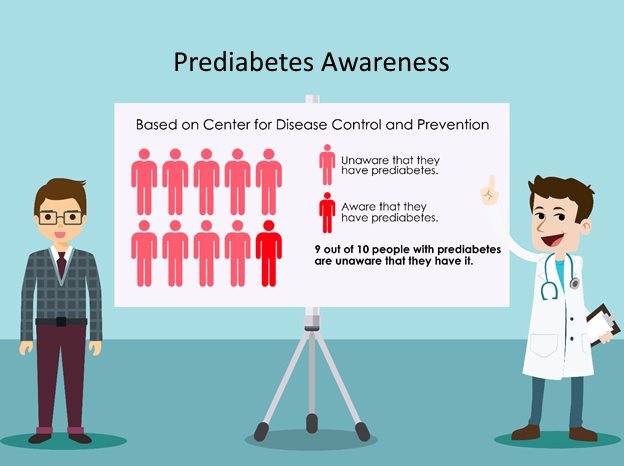

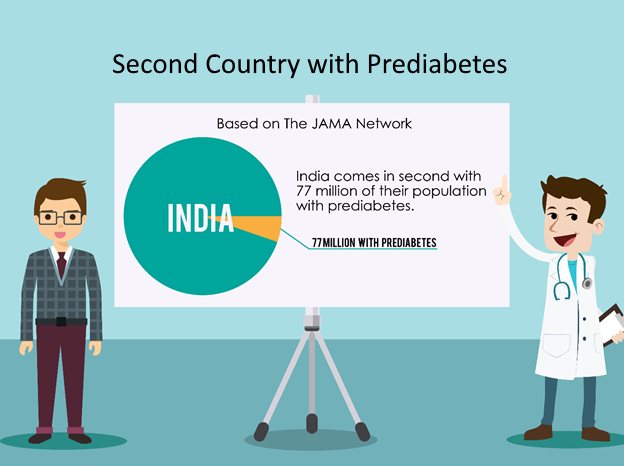
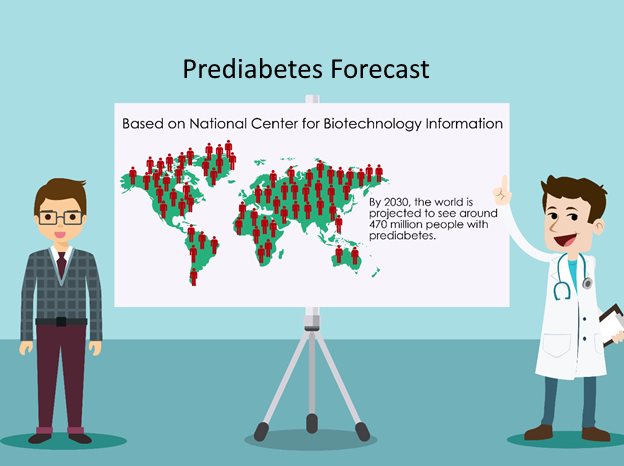
 15 to 30 percent of those who have prediabetes will progress to type 2 diabetes within 5 years (Center for Disease Control and Prevention)
15 to 30 percent of those who have prediabetes will progress to type 2 diabetes within 5 years (Center for Disease Control and Prevention)- 9 out of 10 people with prediabetes are unaware that they have it (Center for Disease Control and Prevention)
- China leads the world in terms of the number of people with prediabetes, clocking in at 493.4 million people in 2013 (The JAMA Network)
- India comes in second with 77 million of their population with prediabetes (Indian Council of Medical Research)
- By 2030, the world is projected to see around 470 million people with prediabetes (National Center for Biotechnology Information)
- Lifestyle modification (e.g. weight loss) can significantly lower the risk of prediabetes progressing to diabetes by 58 percent (S. Diabetes Prevention Program, Finnish Diabetes Prevention Study)
- Another study found that lifestyle modification can reduce diabetes risk by 40 to 70 percent for those with prediabetes (National Center for Biotechnology Information)
Philippine Data on Prediabetes
Interestingly, there is little to no information available on prediabetes that focuses on the Philippine setting. Awareness has yet to gain traction with the general public. With little awareness, Filipinos with prediabetes remain undiagnosed and left untreated until the condition progresses to type 2 diabetes.
A 2008 study by The Philippine College of Physicians, published in The Philippine Journal of Internal Medicine, found that 1 out of every 6 Filipinos have either diabetes or prediabetes, with prevalence rate continuously rising. Results also showed that there are more Filipinos with prediabetes than full-blown diabetes.
There are no official records on how many Filipinos have prediabetes, but according to Philippine Lipid Atherosclerosis Society President Dr. Ruby Go, there are approximately 8 million Filipinos afflicted with the condition.
Similar to studies previously done, Go also stated that lifestyle changes (e.g. exercise, proper diet) can delay the onset of diabetes.
I Have Prediabetes. What Now?
 Being diagnosed of prediabetes should not be considered a dead end. Rather, think of it as standing before a fork in the road. One road leads to type 2 diabetes, the other road leads to reversing the condition. The good news is that diabetes can be delayed or prevented altogether, given your willingness to take action regarding your lifestyle change.
Being diagnosed of prediabetes should not be considered a dead end. Rather, think of it as standing before a fork in the road. One road leads to type 2 diabetes, the other road leads to reversing the condition. The good news is that diabetes can be delayed or prevented altogether, given your willingness to take action regarding your lifestyle change.
Causes of Prediabetes
High-glucose level occurs when your body does not process sugar properly.
Sugar normally powers your cells, giving your body the energy it needs to function. To help the sugar in your blood move to your cells, the pancreas makes the hormone called insulin.
If you have prediabetes, it means your body is not moving the sugar in your bloodstream towards your cells properly. The sugar that comes from the food that you eat and the drinks that you take stay in your bloodstream, which then results in high-glucose levels that shows up during your blood tests.
Exact causes of prediabetes are still unknown. However, there are factors that contribute to a person’s high-glucose levels:
- Food and drinks – Being overweight, especially abdominal fat, affects the way your body breaks down sugar. Moreover, food and drinks with high sugar content contribute to the buildup of glucose in your blood.
- Sedentary lifestyle – Working in front of the computer all day, little to no physical activity, zero exercise—these all reduce your insulin’s capability to circulate and process sugar.
- Your family history – is also a factor in your chances of getting prediabetes or diabetes.
The Complications Prediabetes Gives to Your Body
Understanding that prediabetes is the precursor to full-blown diabetes is not enough. You have to realize that, similar to diabetes, it also comes with its own set of health risks.
The main complications of prediabetes are its development to full-blown diabetes and other long-term complications.
- As data showed in the previous section, people with prediabetes have a higher probability of developing full-blown diabetes in the next five years. This is considered high-risk, as prediabetics are 10 times more likely to have type 2 diabetes than those with normal glucose level.
- Long-term complications. Diabetes brings about damage to various internal organs, such as kidneys, eyes, and the heart. There is strong evidence that suggest these complications begin at the stage of prediabetes.
Take Action Against Prediabetes
Hearing a prediabetes diagnosis may come as a shock to plenty of people, especially since this condition does not come with observable symptoms. One day, you are going on with your daily routine, then the next, you find out that you have prediabetes following a routine blood test. Suddenly, your life is about to be turned upside down.
There are steps you can take to minimize your risk of developing full-blown diabetes, as well as the complications that come with it. Start with the following:
It helps to find out the areas in your life that needs improving. While the idea of change may be intimidating to some, remember that lifestyle modification plays a huge role in delaying the onset of diabetes or reverting to normal glucose level.
What kind of high-sugary food do you need to minimize eating? Are you overweight? When can you schedule exercise into your routine? Keep a diary. The sooner you change your lifestyle, the better.
Acceptance is key.
It is definitely daunting to have to go through massive changes in your life. Remember that you are not the first person to go through this. There are plenty of others who have succeeded in this situation.
After identifying which parts of your life that needs changing, don’t immediately jump to doing big steps. Jogging daily after an almost sedentary lifestyle takes a huge amount of discipline to continue doing it for a long time. You’ll feel overwhelmed and get tired of the change.
First, look into your own emotions.
Are you ready to do all these things? If not, where can you get the help and support that you need? Do you know anyone going through the same thing that you can talk to? How about support groups in your area?
You don’t have to feel like you need to go through it alone. Seek help when needed. Remember why you need to do this: you need to change your lifestyle to stop your prediabetes from progressing to diabetes.
Set goals.
The next step is to set achievable goals. Biting off more than you can chew will only work against you.
If you come from a completely sedentary lifestyle, exercising at the gym for one full hour everyday will be too much. You can start with brisk walking for about 10 minutes around your neighborhood. You don’t even need to do it daily; you can start with every other day until you develop the habit. If you are already doing exercise, you may want to push your limits a bit (e.g. increase your reps or length of time exercising).
The idea here is to set goals that are realistic given your situation. Listen to your body’s limits, but don’t underestimate yourself either. If it helps that you sign up for a professional health coach, do it. You can also bring a friend with you to help motivate each other.
Reversing Prediabetes Through Lifestyle Change
Again, prediabetes is not the end of the road. While a lot of people progress to type 2 diabetes eventually, there are still those who go back to normal blood glucose levels.
Multiple studies found that lifestyle change can significantly lower your risk of progressing to full-blown diabetes. Going back to normal glucose level means a healthier you sans all the complications that come with prediabetes.
To do this, you need to work on the following:
- Lose weight. A study by John Hopkins scientists show that those who lose around 10 percent of their weight within six months of prediabetes diagnosis reduced their risk of progressing to type 2 diabetes. Additionally, the research also suggests that if weight loss wasn’t achieved in the first few months, doctors may take the aggressive treatment route and prescribe medications to lower glucose level.
- Healthier diet. Since the buildup of sugar in your bloodstream are caused by your diet, you need to be more careful with the food that you eat. Go with high-fiber food like vegetables and fruits. You also need food with less sugar content, less saturated fats (like dairy products and meat), and less salt. Make it a habit to check the label of the food that you buy.
- Moving away from a sedentary lifestyle is vital not just for you to lose weight. It also benefits your heart and overall wellbeing. Physical activity actually helps your insulin to work better. Remember to find an exercise regimen that you will find enjoyable to do, otherwise, you’ll lose interest quickly. How about a walk outside everyday? Is there a dance or exercise group you can join? Take small steps (e.g. 10 or 30 mins), then progress to increasing that time of exercise.
- Stop smoking. While this is extremely difficult to do especially for those who are already in the habit for years, understand that smoking also increase your risk of cardiovascular diseases. Lung cancer is also a risk for smokers. To successfully kick the habit, you may want to ask your doctor for what you can do or join local support groups who will guide you through it.
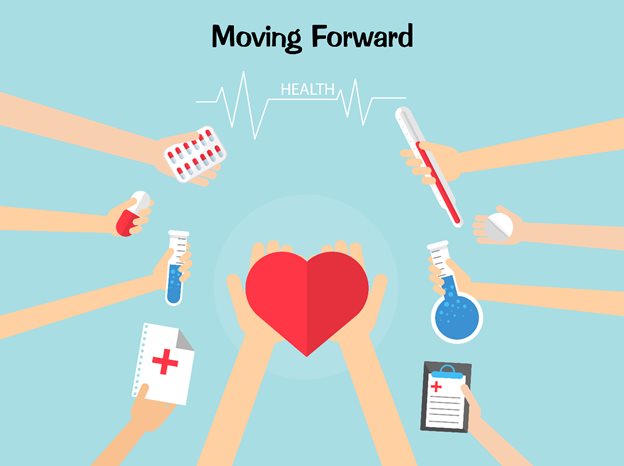
The Future With Prediabetes
Not all people can say that they were warned before being given a grave or a lifelong diagnosis. Prediabetes is not a death sentence. Take it as forewarning. Being diagnosed at an early stage means you have plenty of room to reverse the condition—something that can’t be said for those diagnosed with full-blown diabetes.
Doing Nothing After Diagnosis
Prediabetes does not progress to diabetes overnight. It takes time for it to develop. Some people, however, think this means they do not need to worry or take action immediately.
If you choose to not do anything, your blood sugar level will not revert to its normal level. It will continue to rise until the time that it progresses to full-blown diabetes. Some would even develop complications that diabetes brings.
Monitoring Your Prediabetes
You would need to get yourself checked regularly from the day of your diagnosis. Checkups often happen once or twice per year, so your doctor will be able to accurately monitor your condition. Regular blood tests for your glucose levels are needed. Some doctors would even look at your blood pressure, cholesterol level, weight, even your heart.
If you feel anything or if you need help with changing your lifestyle, do not hesitate to go to your doctor. They have know-how to help you ease your way to preventing diabetes.
Prediabetes That Led to Diabetes
Remember that your susceptibility to diabetes depends largely on your lifestyle and your genes. Your lifestyle can be changed; your genes, unfortunately in this case, stay the same.
If your prediabetes progressed to diabetes despite your lifestyle changes, take comfort in the fact that you did your best and that your genes is not something you can control. Any lifestyle change you’ve made would not be put to waste. They would still benefit your body in the long run. Continue doing them as diet and exercise would greatly help your diabetes treatment.
Go Natural Aims To Raise Prediabetes Awareness
Given the lack in initiatives to raise awareness regarding prediabetes, Go Natural aims to be in the middle of this advocacy to spread knowledge to the general Filipino public. And we will begin with this website.
Throughout the coming months, we will be publishing numerous informative articles about prediabetes—all with the intent to educate and help the Filipino people, both aware and unaware of this condition.
Additional Resources for Prediabetes
Prediabetes and Primary Prevention of Type 2 Diabetes (Center for Disease Control and Prevention)
Prediabetes: a position statement from the Australian Diabetes Society and Australian Diabetes Educators Association (Medical Journal of Australia)
Diabetes, prediabetes and cancer mortality (Springer Nature)
Pre-Diabetes: True Condition or Irrational Fear? (The Doctors)


